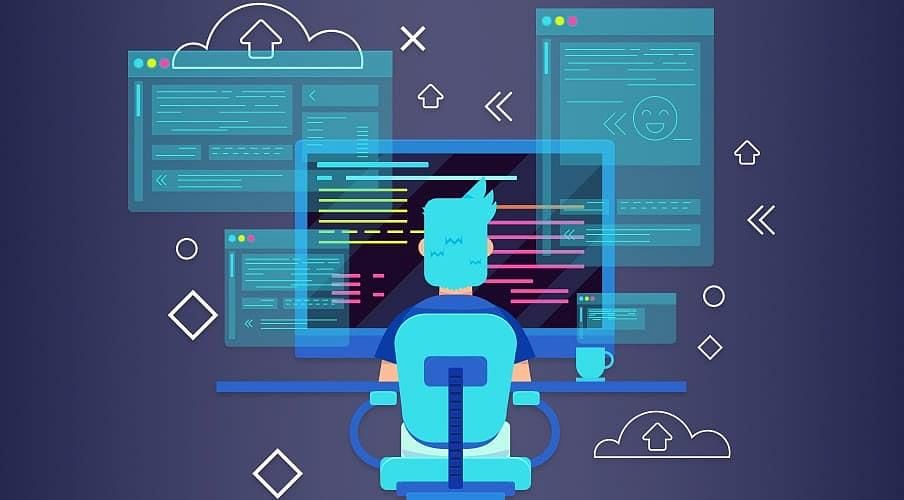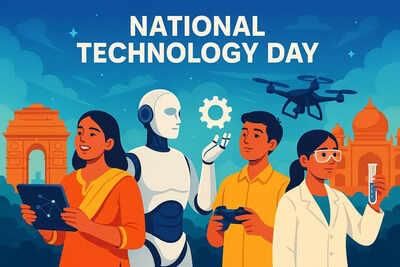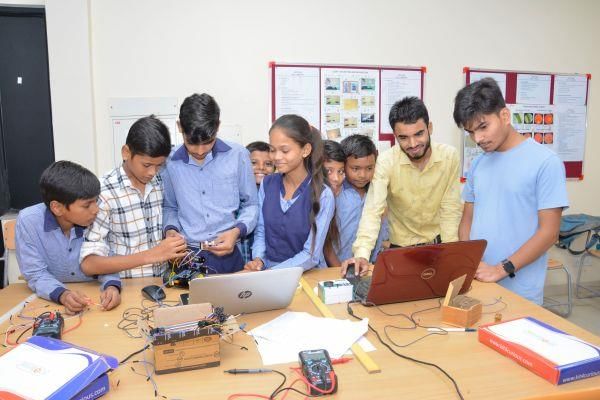UPSC Daily Current Affairs: 11th May 2025 | Current Affairs & Hindu Analysis: Daily, Weekly & Monthly PDF Download
GS2/International Relations
Impact of India-U.K. Trade Deal
Source: The Hindu
Why in News?
India and the U.K. have finalized a Free Trade Agreement (FTA) following three and a half years of negotiations. Although specific details have not been revealed, the agreement has received approval from domestic industries, despite concerns regarding its implications for agriculture and Micro, Small, and Medium Enterprises (MSMEs). The agreement is anticipated to be signed in three months and may take over a year to implement.
Key Takeaways
- Significance of the India-U.K. Free Trade Agreement
- Expectations from the India-U.K. Free Trade Agreement
- Domestic Industry Response to the India-U.K. FTA
- Concerns Surrounding the India-U.K. FTA
Strong Trade Relationship
- The U.K. ranks as India's 16th largest trading partner.
- India is the 11th largest trading partner for the U.K.
- Current bilateral trade approximates $60 billion, with India enjoying a trade surplus.
Growth Potential
- India aims to double trade volume by 2030.
- The British government estimates the FTA could enhance bilateral trade by an additional $34 billion.
Global Context
- The deal is significant amid global trade uncertainties, particularly following tariff disruptions under former U.S. President Donald Trump’s administration.
Tariff Reductions and Market Access
- India will decrease tariffs on 90% of U.K. product categories, with 85% becoming tariff-free within ten years.
- The U.K. will eliminate tariffs on 99% of Indian exports.
- Estimated tariff savings could reach $534 million based on 2022 pricing.
Key Beneficiary Sectors
- India: Increased export opportunities are expected for textiles, leather, footwear, automotive parts, engineering goods, and gems and jewellery.
- U.K.: Tariffs on whisky and gin will reduce from 150% to 75%, and further to 40% over a decade. Automotive tariffs will drop from over 100% to 10%, with specific quotas for vehicles.
Services and Labour Mobility
- Indian workers and their employers will be exempt from social security contributions in the U.K. for three years under the Double Contribution Convention.
- There will be commitments to maintain transparent visa procedures free from unnecessary obstacles.
Resolution of Past Trade Barriers
- The FTA addresses sectors previously impacted by U.S. tariff policies, including automobiles and alcoholic beverages.
Positive Outlook Across Sectors
- The Indian industry has generally welcomed the FTA, anticipating significant increases in exports, particularly in vital sectors.
Apparel and Textiles
- Textiles, a major Indian export to the U.K., are projected to experience significant growth.
- Experts note India's new duty-free access to U.K. markets will be comparable to that of Bangladesh and Vietnam.
- Competition from U.K. imports in this sector is expected to be minimal.
Automobile Industry
- The Federation of Automobile Dealers Associations (FADA) anticipates mutual benefits:
- The U.K. will gain access to India’s premium car segment, while Indian manufacturers will target the U.K.’s mass-market segment.
- Indian cars are expected to stay competitive due to lower production and labor costs.
Gems and Jewellery
- Analysts predict a $2.5 billion increase in exports within two years, aiming to double bilateral trade to $7 billion.
Agriculture Sector Worries
- Farmers' groups express concerns about potential price drops for key products like spices and tea, recalling past experiences with FTAs involving Sri Lanka and ASEAN.
- Rubber prices have plummeted significantly post-ASEAN FTA (from ₹230/kg in 2011 to ₹170/kg in 2025).
- Concerns include unequal competition, small land holdings, and an outdated WTO base price for subsidy calculations disadvantaging Indian farmers.
Impact on MSMEs
- MSMEs fear being undermined by foreign competition in public procurement and other key sectors.
- Experts caution that foreign firms could weaken India's policy tools aimed at building local capacity in sectors like defense, health, and renewable energy.
- U.K. companies may receive better access to Indian government contracts, potentially displacing smaller domestic suppliers.
Import Dependency Risks
- Analysts warn that the FTA could increase import dependency, particularly in sensitive and strategic sectors.
Carbon Border Adjustment Mechanism (CBAM)
- The U.K.'s CBAM may impose carbon pricing on imports, which could impact India's aluminium and steel exports.
- While CBAM is a European initiative, India has indicated a willingness to consider retaliatory carbon taxes, adding to trade uncertainties.
In conclusion, while the India-U.K. FTA presents numerous opportunities across various sectors, it also raises significant concerns, particularly for agriculture and MSMEs, necessitating careful monitoring and strategic responses.
GS2/Polity
Reconsideration of Safe Harbour Protections for Social Media Platforms in India
Source: The Hindu
 Why in News?
Why in News?The government of India is currently reassessing the concept of safe harbour for social media platforms due to increasing concerns regarding fake news, cyber fraud, and AI-generated deepfakes. This was highlighted by the Union Ministry of Information and Broadcasting in its submissions to the Parliamentary Standing Committee on Communication and Information Technology.
Key Takeaways
- The concept of safe harbour provides legal protection to online intermediaries from liability for third-party content.
- India's regulatory framework includes specific guidelines that platforms must follow to maintain these protections.
- There is a growing concern from the government about the compliance of social media platforms with Indian laws.
- Future legislative actions may redefine safe harbour provisions in light of global trends and national security needs.
Additional Details
- Understanding Safe Harbour: Safe harbour is a legal concept that protects online intermediaries from criminal liability for user-generated content. In the U.S., this is governed by Section 230 of the Communications Act of 1934, while in India, it is covered under Section 79 of the Information Technology (IT) Act, 2000.
- Limitations of Safe Harbour in India: The protection is conditional; platforms must remove illegal content upon gaining actual knowledge of it, or lose their safe harbour status. A notable case involved the arrest of eBay India's head in 2004 over child sexual abuse material.
- Regulatory Framework in India: The IT (Intermediary Guidelines and Digital Media Ethics Code) Rules, 2021, require platforms to appoint key officers and submit periodic reports to retain safe harbour protections. These rules have faced legal challenges.
- Government’s Concerns: There are allegations that platforms like Twitter are not complying with Indian laws, delaying content removal, and ignoring government directives.
- Global Context: The U.S. is also debating safe harbour laws, with calls for increased accountability from platforms regarding extremist content. India is considering revisions through the proposed Digital India Act (DIA), which could change safe harbour protections.
The Indian government's reconsideration of safe harbour reflects its evolving strategy to balance freedom of expression, digital innovation, and national security amid rising online misinformation and platform unaccountability. This development is significant in the context of cybersecurity and governance, particularly concerning intermediary liability and digital regulation.
GS1/Geography
Key Facts about Gomti River
Source: Hindustan Times
Why in News?
As Lucknow undergoes rapid urbanization, environmental experts and local citizens express concerns regarding the future of the Gomti River, which is facing various challenges due to this transformation.
Key Takeaways
- The Gomti River is a tributary of the Ganges River, flowing entirely through Uttar Pradesh.
- It is unique as it is both rain-fed and groundwater-fed, unlike other major tributaries in the region that are primarily snow-fed.
- The river originates from Gomat Taal in Pilibhit district and extends approximately 900 km.
- Major cities along the river include Lucknow, Sultanpur, Jaunpur, and Lakhimpur Kheri.
Additional Details
- Origin: The Gomti River begins at Gomat Taal, also known as Fulhaar Jheel, located near Madho Tanda in the Pilibhit district.
- Drainage Basin: It drains an area of about 7,240 square miles (18,750 square km), flowing through districts such as Lucknow, Barabanki, Sultanpur, Faizabad, and Jaunpur before merging with the Ganges near Saidpur.
- Major Tributaries: Important tributaries of the Gomti include the Sai River, Chowka River, Kathina River, and Saryu River.
The Gomti River is not just a vital water source but also an important ecological and cultural lifeline for the region. Its preservation is crucial as urbanization continues to pose significant threats.
GS3/Science and Technology
RNA Exosomopathies
Source: Science Direct
Recent research conducted by scientists at Emory University and the University of Texas Health Science Centre has uncovered that mutations responsible for brain defects in humans lead to similar outcomes in the simpler eukaryotic organism, budding yeast (Saccharomyces cerevisiae).
Key Takeaways
- Mutations impact a cellular complex known as the RNA exosome, crucial for RNA processing, surveillance, and degradation.
- This discovery indicates the potential of using yeast as a model organism to study human neurological disorders linked to RNA exosome dysfunction.
Additional Details
- RNA Exosomopathies: These are disorders resulting from mutations in genes that code for components of the RNA exosome. They primarily lead to issues like brain maldevelopment, affecting structures such as the pons and cerebellum. A notable example is Pontocerebellar Hypoplasia Type 1 (PCH1), which causes severe motor, cognitive, and developmental impairments in infants.
- Role of the RNA Exosome: Discovered in yeast in 1997, the RNA exosome is a multi-protein complex responsible for processing various types of RNA molecules, maturing ribosomal RNA (rRNA) vital for ribosome construction, eliminating faulty messenger RNA (mRNA), and regulating non-coding RNAs (ncRNA).
- Experimental Findings (Study 1 – Journal RNA): Researchers introduced human disease mutations into corresponding yeast genes, revealing that these mutations affected RNA surveillance, ribosome production, and protein synthesis, each carrying a distinct molecular signature that accounts for the varied clinical symptoms in patients.
- Creation of a Humanised Yeast Model (Study 2 – Journal G3): In this study, scientists replaced segments of yeast RNA exosomes with human or mouse genes. Out of 9 core proteins, 6 were successfully replaced, with 3 supporting normal yeast growth. The introduction of known brain-defect mutations into this model proved that mutations directly impair RNA exosome function without indirect mediation.
- Why Yeast? Yeast serves as a simple eukaryote that is easy to genetically modify and culture, providing a cost-effective and rapid method for testing hypotheses and potential drug interventions. Using yeast models allows for quick screening of RNA exosome mutations and their functional consequences.
In conclusion, the findings emphasize the significance of the RNA exosome in neurological disorders and establish yeast as a valuable model for further research into RNA exosomopathies.
GS3/Science and Technology
Pangenome of Asian Rice: A Breakthrough in Genetic Research
Source: Nature
Why in News?
Scientists have successfully created the first-ever pangenome of Asian rice (Oryza sativa L.), which compiles genetic data from 144 varieties of both wild and cultivated rice. This groundbreaking project aims to provide a detailed genetic map of rice diversity, akin to the goals of the Human Genome Project.
Key Takeaways
- The pangenome includes both core genes common to all rice varieties and unique genes specific to individual strains.
- India, a leading rice producer, recorded a historic production of 220 million tonnes in 2024-25 across 51,000 hectares, with an average yield of 4.2 tonnes per hectare.
Additional Details
- Pangenome Database: This new database facilitates the development of advanced rice cultivars with enhanced traits, such as disease tolerance and resilience to climate shocks.
- Researchers utilized high-fidelity sequencing (PacBio HiFi) and advanced computational tools to assemble 87 billion base pairs of novel genetic sequences, which were previously absent from the reference genome of Oryza sativa ssp. japonica.
- A total of 69,531 genes were identified: 28,907 core genes common to all varieties and 13,728 specific to wild rice. Notably, about 20% of all genes were unique to wild rice species, highlighting potential for future advancements in rice breeding.
- The Indian Council of Agricultural Research (ICAR) has developed two genome-edited rice varieties, Samba Mahsuri and MTU 1010, which show potential for higher yields and drought resistance, although they have not yet been released for cultivation.
Climate change poses a significant threat to rice production in India, with an average temperature increase of 0.7°C since 1901. The year 2024 was recorded as the hottest year, with minimum temperatures 0.9°C above average. Additionally, rising temperatures increase arsenic uptake in rice, which could jeopardize both health and crop yield stability.
This comprehensive mapping of rice genetics will significantly aid in breeding programs aimed at improving rice resilience and productivity, essential for food security in the face of climate challenges.
GS3/Science and Technology
National Technology Day 2025
Source: PIB
 Why in News?
Why in News?The Technology Development Board (TDB), operating under the Department of Science and Technology (DST), has revealed the official theme for National Technology Day 2025: “YANTRA – Yugantar for Advancing New Technology, Research & Acceleration.”
Key Takeaways
- National Technology Day is celebrated annually on May 11 to recognize significant achievements in India's technological progress.
- The day marks several crucial milestones in 1998, including the Pokhran-II nuclear tests, the first test flight of the Hansa-3 aircraft, and the successful firing of the Trishul missile.
- It was officially declared by then Prime Minister Atal Bihari Vajpayee and has been celebrated since 1999.
Additional Details
- Organising Body: The event is coordinated by the statutory body under DST, which aims to promote the commercialization of homegrown technologies.
- About YANTRA: The term “YANTRA” is rooted in India’s ancient scientific and cultural heritage, symbolizing not only mechanical tools but also the concept of systems thinking, synergistic innovation, and scalable technological solutions.
- Yugantar: This term signifies an epochal transformation, marking India's shift from merely adopting technology to leading in global technological advancements, thus altering the narrative of innovation in the country.
Overall, National Technology Day serves as a reminder of India's remarkable strides in technology and its commitment to fostering innovation and development in the technological sector.
GS3/Science and Technology
What is LICONN Technology?
Source: Times of India
 Why in News?
Why in News?Scientists have recently developed a groundbreaking technique called LICONN, which enables the mapping of brain cell connections using light microscopes. This innovation represents a significant advancement in our understanding of the brain's complex neural networks.
Key Takeaways
- LICONN stands for Light-microscopy-based Connectomics.
- This method allows for nanoscale mapping of brain structures while identifying specific molecules within those connections.
- Developed at the Institute of Science and Technology Austria (ISTA), LICONN combines various technologies including artificial intelligence.
Additional Details
- Innovative Approach: LICONN is the first technology to reconstruct brain tissue with all synaptic connections without relying solely on electron microscopy (EM).
- Researchers previously faced a dilemma: they could either visualize the detailed physical structure of neural connections with EM or identify specific molecules using light microscopy, but not both at the necessary resolution.
- LICONN overcomes this by expanding brain tissue in a special gel, increasing its size by approximately 16 times, and employing fluorescent stains to highlight various proteins.
- Advanced computer programs, including AI, are utilized to trace the shapes of neurons and provide insights into brain connectivity.
This innovative technique not only enhances our understanding of the brain's connectivity but also opens new avenues for research into neurological functions and disorders.
GS3/Science and Technology
Magnetars and the Production of Heavy Elements
Source: Science Alert
Why in News?
Recent research has provided observational evidence that magnetar flares can produce heavy elements, such as gold, through a process known as r-process nucleosynthesis. Previously, it was thought that gold primarily formed in neutron star mergers.
Key Takeaways
- Magnetars have exceptionally strong magnetic fields, estimated to be a thousand times stronger than typical neutron stars.
- Intense bursts of energy are emitted during magnetar flares, which can lead to the creation of heavy elements.
- A significant discovery was made from a giant flare emitted by a magnetar in 2004, revealing unusual gamma-ray emissions.
Additional Details
- What Are Magnetars: Magnetars are a type of neutron star characterized by their extraordinarily strong magnetic fields. These fields can lead to intense energy emissions during flares, which are not typical of standard neutron star behavior.
- What Is R-Process Nucleosynthesis: This rapid neutron-capture process involves a series of nuclear reactions where atomic nuclei quickly capture neutrons, resulting in the formation of heavy elements like gold, platinum, and uranium. It occurs in extreme energy environments with neutron-rich matter.
- During the 2004 flare, researchers estimated that approximately 9 septillion kg of r-process material was ejected at nearly light speed, indicating that magnetars could play a significant role in the universe's heavy element inventory.
This discovery not only enhances our understanding of magnetars but also suggests they contributed to the chemical evolution of galaxies much earlier than previously believed, challenging the notion that neutron star collisions were the primary source of such heavy elements.
GS2/International Relations
India’s Military Response and International Law: Analyzing the Legal Framework
Source: The Hindu
Why in News?
On May 10, India and Pakistan agreed to cease "all firing and military action" following a period of increased tensions between the two nuclear-armed nations.
Key Takeaways
- India conducted military strikes in response to the Pahalgam massacre, which resulted in the deaths of 26 civilians.
- The legality of India's actions under international law is under scrutiny, particularly regarding self-defense against terrorism.
Additional Details
- Legal Basis for Use of Force: Article 51 of the UN Charter permits self-defense following an "armed attack," despite Article 2(4) prohibiting force against a state's territorial integrity.
- Role of ICJ: The International Court of Justice (ICJ) has interpreted "armed attack" as a severe form of force, influencing how states justify military actions.
- Self-Defense Against Non-State Actors: Traditionally, the UN Charter governs state actions, complicating responses to non-state actors like terrorist groups. However, post-9/11, many nations argue that self-defense can extend to actions against these groups.
- The "Unwilling or Unable" Doctrine: This emerging doctrine allows states to act against non-state threats from another state's territory if that state is unable or unwilling to address the threat. India referenced this concept by highlighting Pakistan's inaction against terrorism post-Pahalgam.
- Necessity and Proportionality: Customary international law requires military responses to adhere to the principles of necessity and proportionality. India claimed its strikes were necessary to prevent further attacks while targeting only terrorist infrastructure.
In conclusion, while a ceasefire has been established, the long-term peace between India and Pakistan remains uncertain. India’s military actions under "Operation Sindoor" could set a precedent in the evolving discourse on international law relating to self-defense against terrorism.
GS2/International Relations
India-Pakistan Ceasefire
Source: The Hindu
Eighteen days following a terrorist attack in Pahalgam, Jammu and Kashmir, which prompted a military response from India and led to days of conflict with Pakistan, both nations have agreed to cease hostilities. The ceasefire took effect at 5 PM on May 10, 2025.
Key Takeaways
- India and Pakistan have reached an agreement to stop military actions following intense conflict.
- The ceasefire announcement was made by External Affairs Minister S. Jaishankar.
- The agreement is a bilateral understanding, not mediated by any third party.
Additional Details
- Military Action Ceasefire: The decision to halt military operations comes after a significant escalation in hostilities, marking the end of the most intense conflict between the two nations in decades.
- US Involvement: Although U.S. President Donald Trump claimed credit for facilitating the ceasefire through negotiations, Indian officials clarified that it was a direct bilateral agreement, consistent with the 1972 Simla Agreement.
- India’s New Strategy:Since 2014, India has shifted its approach to security, taking decisive actions such as:
- Crossing the Line of Control post-Uri attack (2016).
- Deep military strikes during the Balakot incident (2019).
- Revoking Jammu and Kashmir's special status.
- Conducting attacks on terrorist camps in West Punjab (2025).
- Suspending the Indus Waters Treaty.
- Impact on Future Engagement: The suspension of the Indus Waters Treaty suggests India’s readiness to take stronger actions if provoked, with future discussions potentially involving significant demands for treaty renegotiations.
- Need for Broader Engagement: Building connections with Pakistani civil society might be essential for addressing military dominance and fostering peace.
This ceasefire represents a significant moment in India-Pakistan relations, highlighting both nations' ability to manage conflict independently and the potential for future dialogue, despite historical challenges.
GS3/Economy
National Scheme for Upgradation of Industrial Training Institutes (ITIs) and Establishment of Five National Centres of Excellence (NCOEs) for Skilling
Source: NDTV
 Why in News?
Why in News?The Union Cabinet has approved a significant initiative known as the National Scheme for Industrial Training Institute (ITI) Upgradation and the establishment of five National Centres of Excellence for Skilling. This scheme is designed as a Centrally Sponsored Scheme with a substantial financial outlay aimed at enhancing the quality of vocational training in India.
Key Takeaways
- The scheme has a total outlay of Rs. 60,000 crore, comprising:
- Central Share: Rs. 30,000 crore
- State Share: Rs. 20,000 crore
- Industry Share: Rs. 10,000 crore
- Co-financing will be provided by the Asian Development Bank and the World Bank, covering 50% of the Central share.
- Focus on upgrading 1,000 Government ITIs with industry-aligned trades and capacity augmentation.
- Goal to skill 20 lakh youth over five years to meet industry demands.
Additional Details
- Implementation Model: The scheme will adopt an industry-led Special Purpose Vehicle (SPV) model, ensuring effective industry participation and alignment with market needs.
- Infrastructure Development: Upgraded Training of Trainers (ToT) facilities will be established in five National Skill Training Institutes (NSTIs): Bhubaneswar, Chennai, Hyderabad, Kanpur, and Ludhiana.
- Trainer Training: The program will provide pre-service and in-service training for 50,000 trainers to enhance the quality of vocational education.
- The scheme emphasizes flexibility in fund allocation based on the needs of individual institutions, allowing for targeted investments.
This initiative aims to transform existing ITIs into government-owned, industry-managed institutions that serve as aspirational centers for skill development, thus bridging the gap between local workforce capabilities and industry requirements.
|
52 videos|5374 docs|1136 tests
|
FAQs on UPSC Daily Current Affairs: 11th May 2025 - Current Affairs & Hindu Analysis: Daily, Weekly & Monthly
| 1. What are the key benefits expected from the India-U.K. trade deal? |  |
| 2. How does the trade deal impact small businesses in India and the U.K.? |  |
| 3. What are the concerns regarding the reconsideration of safe harbour protections for social media platforms in India? |  |
| 4. How does the India-Pakistan ceasefire agreement affect regional stability? |  |
| 5. What is the significance of the pangenome of Asian rice in genetic research? |  |
















